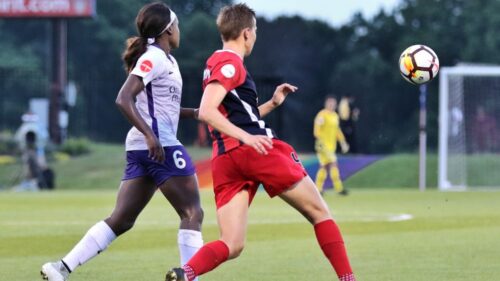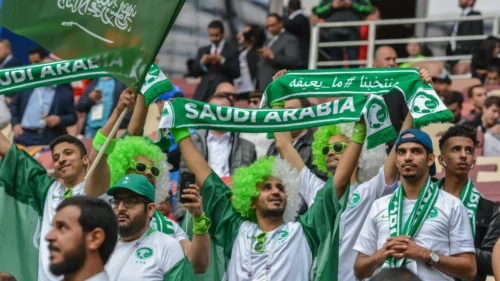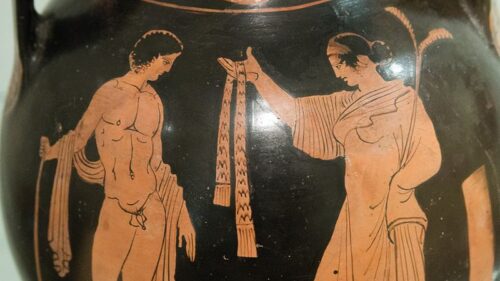In association football, the world’s a safari park where wild animals (the players) are kept in the open and may be observed by visitors (fans) driving through. The owners of the areas of parkland charge visitors and pay the usual overheads plus a handsome bonus for the beasts. This isn’t quite as businesslike as it sounds. In fact, it appears absolutely inane when you realize the outgoings exceed the amount of money generated. What sounds like a potentially profit-making enterprise actually loses money hand over fist.
This painfully contrived metaphor leads me to the question I want to answer in this piece. While safari parks are, to my knowledge, well-run endeavors that turn a penny, football clubs are decidedly not. So why would anyone in their right mind and with plenty of money want to prolong the excruciating metaphor, put their heads in a lion’s mouth?
Money-burning on purpose?
Half of England’s Premier League clubs are now in American hands. And yet most of these clubs lose tens of millions of pounds every year. Are football clubs businesses designed to burn money? It certainly seems like it.
Still, it’s a mostly free world and people are entitled to lose their lucre if they wish. Sheikh Mansour bin Zayed Al Nahyan, the deputy Prime Minister of the United Arab Emirates, wishes. In 2008, he bought the then-unfashionable club Manchester City and used his money to turn the team into worldbeaters. Newcastle United is also owned by Gulf State interests — in this case, Saudi Arabia’s Public Investment Fund. Outside England, Paris Saint-Germain is owned by Qatar Sports Investments. All three clubs lose money, though the losses are comparatively small by Gulf standards. In all three cases, the acquisitions are like you or me treating ourselves to a new high-end television set; we’d have to pay the streaming subscriptions and the electric bills, but watching it is bound to give us a lot of comfort over the years.
The American stampede to buy English clubs needs a different explanation, though. American owners don’t treat clubs like a Cézanne painting, a blue diamond or a 1945 Domaine de la Romanée-Conti wine that sells for about $600,000 a bottle. Possessing irreplaceable artifacts like these is rewarding. Football clubs are valuable but replaceable. Any prospective buyer would surely make a comprehensive appraisal, balance a club’s assets and liabilities, evaluate its commercial potential and conclude it’s a money pit. And then buy it. Why?
I’ll take Manhattan
Let’s say you had enough money — or could at least borrow enough at an affordable interest rate — to buy property in Chelsea, London, or Manhattan, New York. Both are top-tier markets where prime buildings fetch $2,000–$4,000 per square foot, with ultra-rare assets climbing far higher. Real estate is scarce and rents are sky-high.
But you get a chance. You don’t want to live there, but you know the property will rent easily and at a strong rate. The rent, steep as it is, doesn’t cover the interest you’re paying on the loan (let’s say you pitched in 30% yourself and borrowed the balance). So you know in advance that the property is going to lose money. But in ten or 15 years, that property could have quadrupled, maybe quintupled, in value. Scarcity, inflation and global demand take care of that. You bought for $2 million. You sell at $8–10 million, meaning an annualized return of roughly 10–15% per year, compounded — ignoring transaction costs and taxes.
You could enhance the value of the property further by renovating it or making cosmetic or even structural changes, like installing a basement pool. And perhaps a Hollywood A-lister takes a shine to the place and rents it for a period every year, giving the place a certain je ne sais quoi (indescribable quality).
Purchasing Chelsea or Manhattan property at a loss with the expectation of long-term appreciation has a logic and American investors have applied the same logic to Premier League clubs, sometimes with more prodigious appreciation. Take the late businessman Malcolm Glazer’s acquisition of Manchester United in 2005, for example. At the time, United was already a highly profitable club, yet Glazer bought it with a strategy that blended asset-building with financial leverage: using the club itself to secure loans and restructure ownership. We needn’t dwell on the complexities of his approach here, but the key point is clear: Even a well-run, profitable club can be acquired with an eye to long-term capital growth rather than immediate operating returns.
Today, his sons continue to pursue a similar basic approach. They spend vast sums on salaries to attract top players, betting that the club’s global brand and commercial clout will keep appreciating over time, even if on-field success is intermittent. The purchase price in 2005 was £790 million; the estimated value of the club is now £4.3 billion ($6.6 billion), representing a five-and-a-half times increase.
By contrast, Liverpool under Fenway Sports Group (FSG) and Chelsea under businessman Todd Boehly and US private equity firm Clearlake Capital (which raises money from investors to buy, restructure and eventually sell companies at a profit) have applied a slightly different but related logic. Both clubs deliberately absorb operational losses to build value, investing heavily in players, infrastructure and global brand recognition. Unlike Manchester United, whose brand was already enormous when acquired, Liverpool and Chelsea required both performance and marketing strategies to enhance their appeal. The results have largely justified the strategy: Liverpool has prospered under FSG, while Chelsea, after selling its women’s team last year, at least broke even. But in both cases, operating losses remain the norm.
Liverpool cost FSG £300 million in 2010; the club is now valued at £3.6 billion ($5.4 billion). Boehly and Clearlake bought Chelsea for £2.5 billion (plus £1.75 billion committed investment) in 2022. So far, the club has appreciated only modestly by about 8% to about $3.25 billion.
Remember: Football clubs may not have much liquidity, but they have predictable assets with substantial resale value. These include stadiums, ticketing, media rights and, of course, the contracts of the players. A single contract for one player could be worth tens of millions on the transfer market. Transfers involve the trading of contracts rather than players.
In short, whether it’s a trophy penthouse in Manhattan or a Premier League club, the American playbook is consistent: accept short-term losses in exchange for long-term asset appreciation, with the added bonus that global visibility and prestige can compound the perceived value just as celebrity tenants elevate a property’s cachet.
What about Bournemouth?
Manchester United, Chelsea and Liverpool are, in a sense, proven commodities. They’re situated in large metropolitan conurbations, with global fan bases and international reach; they are all leading clubs.
What about Bournemouth? Based in a small resort town on the south coast of England with a population of less than 160,000 and no brand recognition to speak of, it seemed an odd acquisition when, in 2022, American businessman Bill Foley bought 100% of the club for a reported £100 million (over $135 million). He integrated it into his Black Knight Football Club (BKFC), which has clubs in Portugal, Scotland, New Zealand and elsewhere. Foley has interests in a great many sports clubs besides.
At first glance, the asset-building model seems less certain here. Trophies and worldwide sponsorship deals are unlikely to drive rapid value appreciation. Yet Foley’s strategy may not rely solely on global brand recognition. By maintaining Premier League status, optimizing matchday and broadcast revenues and integrating Bournemouth into BKFC’s growing network of clubs, he can create value incrementally. The club becomes a scarce, transferable asset: small, manageable and with room for structural or operational improvements — akin to buying a well-located property in a modest town and enhancing it gradually. Even without the glamor of top clubs, a decade from now, Bournemouth could yield a tidy profit for its American owner.
Bournemouth isn’t the only minor club to attract interest, either: A football club in Wrexham, a tiny Welsh mining town (population 45,000), was snapped up by Canadian and American actors Ryan Reynolds and Rob McElhenney, respectively, for £2 million ($2.7 million) in 2021. In June 2025, Reynolds and McElhenney considered selling a stake for a valuation of up to £350 million ($415 million). Birmingham City, an ailing, underachieving club in a big city, was bought by a consortium that included former National Football League star Tom Brady.
Short-term loss, long-term profit
Ultimately, what links all these acquisitions is a willingness to absorb short-term losses in pursuit of long-term value. Whether it’s a global powerhouse like Liverpool or Chelsea, a historically profitable but leveraged club like Manchester United or a modest, out-of-the-way club like Bournemouth, the logic is the same: These are tangible assets whose worth can grow substantially over time even if the immediate cash flow is negative.
For American owners, the allure lies not just in potential financial returns, but also in prestige, global influence and, stretching a point, the opportunity to shape a sporting legacy. Football really is like a safari park. It may appear chaotic, menacing and treacherous, and perhaps it is. But the reserve appreciates in value, and that perilous wilderness is also a thriving asset.
[Ellis Cashmore’s “The Destruction and Creation of Michael Jackson” is published by Bloomsbury.]
[Lee Thompson-Kolar and Kaitylin Diana edited this piece.]
The views expressed in this article are the author’s own and do not necessarily reflect Fair Observer’s editorial policy.
Support Fair Observer
We rely on your support for our independence, diversity and quality.
For more than 10 years, Fair Observer has been free, fair and independent. No billionaire owns us, no advertisers control us. We are a reader-supported nonprofit. Unlike many other publications, we keep our content free for readers regardless of where they live or whether they can afford to pay. We have no paywalls and no ads.
In the post-truth era of fake news, echo chambers and filter bubbles, we publish a plurality of perspectives from around the world. Anyone can publish with us, but everyone goes through a rigorous editorial process. So, you get fact-checked, well-reasoned content instead of noise.
We publish 3,000+ voices from 90+ countries. We also conduct education and training programs
on subjects ranging from digital media and journalism to writing and critical thinking. This
doesn’t come cheap. Servers, editors, trainers and web developers cost
money.
Please consider supporting us on a regular basis as a recurring donor or a
sustaining member.
Will you support FO’s journalism?
We rely on your support for our independence, diversity and quality.










Comment